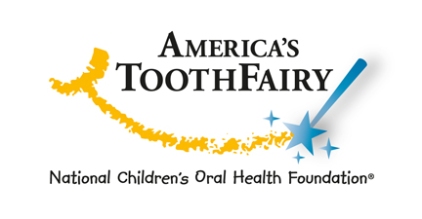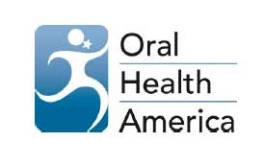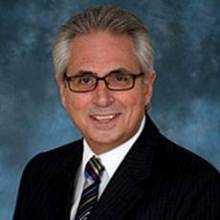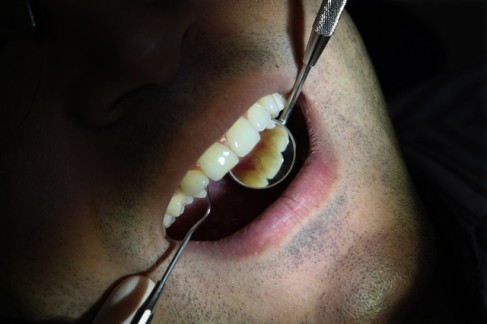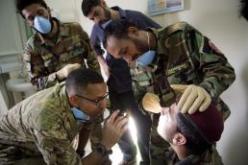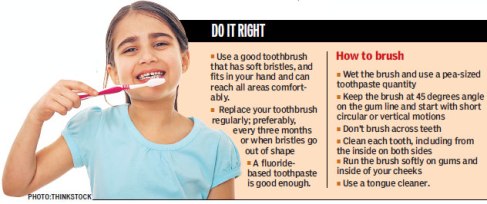
With the market full of toothpaste brands promising whiter teeth within a week, 12-hour protection from bad breath, gum protection and protection from hypersensitivity, choosing the right toothpaste is getting tougher each day.
But contrary to the claims made by toothpaste
commercials, rather than the brand of your toothpaste, how you brush your teeth is more important.
According to dental experts, the use of fancy and expensive toothpastes does not guarantee better oral hygiene, and no matter how tall claims the toothpaste companies make, the effectiveness of all major brands available in the market is more or less similar.
“Every second patient I see invariably has this parting question: Can you recommend me a good toothpaste? I try and tell them that as far as the composition is concerned, they all are roughly the same and it doesn’t make sense to buy more expensive products with the same composition,” said Dr Ashish Kakar, a Delhi-based dental senior consultant.
Just to bust the myth, a toothpaste is non-permeable and brushing teeth is fundamentally a surface phenomenon. Cleaning by and large is achieved by the mechanical action of the toothbrush, and not by the toothpaste.
“Toothpaste is basically like soap, which works as a cleaning agent. Flavours were added to it only later. Fluoride content in toothpaste gets stuck to the enamel but the amount that is found in Indian toothpastes is not adequate, hence, the effect is non-therapeutic,” said Kakar.
Indian toothpastes don’t have more than 1,000 parts per million (ppm) of fluoride, which is much less than toothpastes available in the European countries with the level as high as 1,450 ppm.
From being mere cleansers, toothpastes have come a long way. The second stage of innovation saw manufactures putting fluoride, which is a bicarbonate, for preventing dental caries (cavity) and to have antibacterial action. Later, another improvisation was made by adding a component called triclosan, which is used in products with anti-microbial function, and is known to prevent dental plaque.
Apart from toothpastes, it’s found in a variety of common household products, including soaps, mouthwashes, dish detergents, deodorants, and even anti-bacterial hand sanitisers.
Over a period, zinc was also added to remove tartar, and now the market has reached a level where manufacturers have started looking at hypersensitivity. Active salts and white shines are effective to an extent as they have sodium and calcium bicarbonates but they work only till one uses the product.
“If at all anything, the fluoride content of the toothpaste should be increased for it to be more effective. But the most important thing is the right brushing technique and the time taken to brush,” said Dr Mahesh Verma, principal, Maulana Azad Institute of Dental Sciences.
However, on an average, people don’t brush for more than 30 seconds and not more than 10% of the population uses dental floss. The use of mouthwash is also not very common.
“Ideally, two minutes of proper brushing that covers all areas of mouth properly, followed by flossing and rinsing with a mouthwash twice a day is integral to an effective oral health routine. For those with braces or oral implants, flossing is recommended twice a day,” added Verma.
According to dental experts, one should rinse with a mouthwash not just after but before brushing also as it breaks down the plaque and then it becomes easier to remove the deposits.
“The best mouthwash will be one with low alcohol content. If there is alcohol, cut it with equal amount of water to be able to rinse for 30 seconds without burning and damaging gums, and other soft tissues,” said Kakar.
Doctors even warn against the use of fancy toothbrushes that are battery operated as they can be harmful to gums. Any toothbrush with soft bristles and a tongue cleaner is a good choice.
However, the fast-paced lives we lead these days, people hardly have enough time and patience to brush properly. The result is increased cases of plaque and dental carries, especially among children.
“Children aged between four and nine years come with not one or two but at times more than 10 dental cavities. Junk food is solely to be blamed as there is no roughage in the food that can have cleansing effect. Certain food items such as pears are known good sources of fluoride and anti-oxidants,” said Kakar.
As the children grow older, bleeding gums, damaged roots become common.
“We recommend visiting a dentist at least once in two years and if there is a problem then once in a year. For diabetics it’s once in six months, but half the clinic visits will come down if preventive measures are taken,” said Verma.
Source: http://www.hindustantimes.com/Entertainment/Wellness/Oral-care-Get-basics-right/Article1-1099981.aspx

